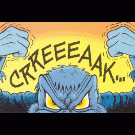Αναζήτηση στην Κοινότητα
Εμφάνιση αποτελεσμάτων για ετικέτες 'Fummeti'.
Βρέθηκε 2 αποτελέσματα
-
Ο Vittorio Giardino είναι από τους πιο γνωστούς Ιταλούς δημιουργούς κόμικς. Γεννημένος το 1946 στην Μπολόνια, σπούδασε ηλεκτρολόγος μηχανικός στο πολυτεχνείο της πόλης και στα 31 του χρόνια αποφασίζει πως θα αφιερωθεί ολοκληρωτικά στα κόμικς. Η Ένατη Τέχνη τον κέρδισε και η επιστήμη έχασε έναν αξιόλογο ερευνητή, μιας και είχε ήδη 6 δημοσιεύσεις πριν την ηλικία των 30 ετών. Η αλήθεια είναι όμως πως κάποια χαρακτηριστικά του τομέα χαράχθηκαν βαθιά μέσα του και αυτό απεικονίζεται στον τρόπο που σχεδιάζει. Το σκίτσο του είναι από τα πιο καθαρά και λεπτομερή της Ιταλικής σχολής κόμικς και αυτός δίκαια θεωρείται ένας από τους πιο χαρακτηριστικούς εκπροσώπους της "καθαρής σχεδιαστικής γραμμής",μαρτυρώντας τη μετάβαση από το μηχανολογικό σχέδιο κυκλωμάτων και τρανζίστορ στα πρόσωπα και τα τοπία. Ο ίδιος συχνά έχει αναφερθεί σε αυτό τοποθετώντας τον εαυτό του στους συνεχιστές της "Ligne Claire" της γαλλικής καθαρής γραμμής της Γαλλοβελγικής σχολής του Herge, του Jacobs και πολλών άλλων επιφανών καλλιτεχνών. Σίγουρα δεν μπορεί κάποιος να πει πως ο Giardino κάνει προχειροδουλειές αφού η συντριπτική πλειοψηφία των 50+ τίτλων που έχει δημοσιεύσει τα τελευταία 47 χρόνια είναι ιστορικά άλμπουμ ή τίτλοι που ένα μεγάλο μέρος τους βασίζεται στην ιστορική ακρίβεια. Τίτλοι όπως "Οι περιπέτειες του Μαξ Φρίντμαν" το "Ένας Εβραίος στην Κομμουνιστική Πράγα" ή η σειρά "Sam Pezzo" μπορεί να απέχουν παρασάγγης στην πολυπλοκότητα του σεναρίου αλλά όλα ακολουθούν την ίδια νόρμα. Όμορφο λεπτομερές σχέδιο χωρίς υπερκαλύψεις, πιστότητα στις πόλεις/περιβάλλοντα που εξελίσσονται οι υποθέσεις και μεγάλη έρευνα στο ιστορικό, κοινωνικό και πολιτικό υπόβαθρο της εποχής. Ο Vittorio δεν έκρυψε ποτέ τις πολιτικές του προτιμήσεις κάνοντας ξεκάθαρη την θέση του από την πρώτη του κιόλας δουλειά "Pax Romana" που δημοσιεύθηκε στο περιοδικό "La Citta Futura" της Ιταλικής Κομμουνιστικής Ομοσπονδίας. Από κει και πέρα θα δούμε πως όλες του οι δουλειές καλύπτουν μια ευρεία θεματολογία, από κλασικό νουάρ και ιστορικά θρίλερ μέχρι φινετσάτα ερωτικά, αλλά όλες λίγο πολύ έχουν ένα κάποιο πολιτικό υπόβαθρο ή παίρνουν άμεσα θέση κριτικάροντας το εκάστοτε πολιτικό σύστημα που επιλέγει ο δημιουργός. Παρόλο το πλήθος μικρών ιστοριών γύρω από το ψέμα, τον ερωτισμό, την ίντριγκα και την απάτη, ο Giardino στην καριέρα του κινήθηκε γύρω από τέσσερις κύριους κατευθυντήριους άξονες. Ο πρώτος κύριος χαρακτήρας του ήταν ο Ιταλός ιδιωτικός ντετέκτιβ Sam Pezzo τον οποίο δημιούργησε το 1978 με την ιστορία Sam Pezzo: Piombo di mancia. Ο Pezzo είναι ο μπαρουτοκαπνισμένος ντετέκτιβ που κινείται στην σκιά του νόμου, ακολουθεί αμφισβητούμενες μεθόδους για να επιλύει τις υποθέσεις του και καταφέρνει πάντα να μπλέκεται με καυτά θηλυκά στην σκοτεινή πλευρά της Μπολόνια. Ο Sam έμεινε να είναι και ο πιο δουλεμένος του ήρωας με 9 άλμπουμ σε 4 χρόνια (1979-1983). Στη συνέχεια πέρασε σε μεγαλύτερα κλιμάκια και την διεθνή κατασκοπία με τον δεύτερο χαρακτήρα του και πιο γνωστό, τον Max Fridman. Ο Max Fridman είναι ένας πρώην μυστικός πράκτορας που αναμιγνύεται στην πολιτική αναταραχή της Ευρώπης του 1930 μεταξύ των δύο παγκοσμίων πολέμων. Η πρώτη του περιπέτεια "Hungarian Rhapsody" [1982] (που είναι και το μόνο έργο του που έχει δημοσιευθεί στα Ελληνικά από την ΒΑΒΕΛ με τον τίτλο ΟΥΓΓΡΙΚΗ ΡΑΨΩΔΙΑ) έβαλε τον Vittorio στο κέντρο της παγκόσμιας σκηνής κόμικς. Η σειρά πλέον με τίτλο "Max Fridman Adventures" έχει εκδοθεί σε 18+ χώρες και είναι διεθνώς αναγνωρισμένη ως κλασικό δείγμα της Ένατης τέχνης. Στα μέσα της δεκαετίας του '80 παράλληλα με την δεύτερη περιπέτεια του Φρίντμαν με τίτλο "Max Fridman: La Porta d'Oriente" [1985] ο αγαπημένος Ιταλός άρχισε να δουλεύει ένα άλμπουμ σε άγνωστα νερά για αυτόν, του σατυρικού ερωτισμού. Έτσι προέκυψε το "Little Ego" που εξελίχθηκε σε strip και κυκλοφόρησε αρχικά στο Glamour International Magazine και στη συνέχεια - και μέχρι την ολοκλήρωσή του - στο Ιταλικό Comic Art το διάστημα Ιούλιος 1985 - Νοέμβριος 1989. Έτσι προέκυψε ο τρίτος μεγάλος χαρακτήρας, η Ego, που ήταν και η πρωταγωνίστρια της ερωτικής παρωδίας των κλασικών κόμικ "Little Nemo" του Winson Mccay. Τo Little Ego έγινε τόσο δημοφιλές που πέρασε και από τις σελίδες των Αμερικανικών Heavy Metal και Penthouse. Όπως και στο Little Nemo, η κάθε ιστορία ξεκινάει με την Ego να ονειρεύεται και τελειώνει με αυτήν να ξυπνά στο τελευταίο πάνελ. Σε αντίθεση με τον Nemo που διηγούνταν το εκάστοτε όνειρο στην μητέρα του, η Ego μίλαγε στον ψυχαναλυτή της. Σε κάθε όνειρο βλέπουμε την Ego ημίγυμνη ή γυμνή τουλάχιστον μία φορά και επιδίδεται σε ερωτικές πράξεις με άντρες, γυναίκες, φυτά και ζώα. Πέραν των βασικών ηρώων, όλα αυτά τα χρόνια ο Giardino δημοσιεύει μικρές ιστορίες που έχουν εν μέρει αυτοβιογραφικά στοιχεία. Χαρακτηριστικά παραδείγματα είναι οι "Sotto falso nome" [1987], "La rotta dei sogni" [1993], "La terza verita" [1990] και Vacanze Fatali (η τελευταία συλλογή είχε δημοσιευθεί στη Βαβέλ και μπορούμε να την διαβάσουμε σε ευγενική χορηγία του Sandman) . Το τέταρτο σκαλί της επιτυχίας της καριέρας του ως κομιστας ήρθε το 1991 με την δημιουργία του τέταρτου μεγάλου ήρωα, του Εβραίου Jonas Fink. Ο μικρός Jonas ζει με την οικογένεια του στην κομμουνιστική Πράγα του 1950 και όλα κυλούν ήσυχα στη ζωή του μέχρι που ο πατέρας του συλλαμβάνεται για "αντι-επαναστατικές ενέργειες" και δόλο κατά του κομμουνιστικού καθεστώτος. Αυτό αποτελεί έναρξη για μία ζωή γεμάτη κινδύνους και κακουχίες γι'αυτόν και την μητέρα του αλλά για περισσότερα στοιχεία θα παραπέμψω στην αντίστοιχη παρουσίαση [link παρακάτω]. Η σειρά Jonas Fink κυκλοφόρησε 3 άλμπουμ-συνέχειες το διάστημα 1991-1998 (scanlation του πρώτου τεύχους από την αφεντιά μου) και φημολογείται ότι το 2016 και μετά από 18 χρόνια θα κυκλοφορήσει και τέταρτο μέρος. Ταυτόχρονα με το τέλος του Jonas το 1998 ξεκινά την τρίτη μεγάλη περιπέτεια του Max Fridman στον Ισπανικό εμφύλιο με τίτλο "No Pasaran" που κυκλοφόρησε σε τρία μέρη και εκδόθηκε κάποια χρόνια μετά σε μία συγκεντρωτική έκδοση. Στην δεκαετία του 2000 και λόγω ηλικίας πλέον έπεσε η παραγωγικότητά του με μόνο δύο περιπέτειες του Fridman ("Rio de Sangre - 2002" και "Sin ilusion - 2008" αλλά είδαμε και πολλά συμπληρωματικά βιβλία με σκίτσα, αφίσες και ΑΜ αρχικές εκδόσεις του να κυκλοφορούν στην Γαλλία και Ιταλία. Ενώ τα έργα του έχουν εκδοθεί σε όλη την Ευρώπη από πολλές εταιρίες, τα δικαιώματα για τις Αγγλικές μεταφράσεις τα έχει η NBM publishing η οποία και έχει εκδώσει ένα κομμάτι της εργογραφίας του στις Η.Π.Α. και την Μεγάλη Βρετανία. Προσωπικά τον θεωρώ έναν από τους μεγαλύτερους Ιταλούς κομίστες, δεύτερος μόνο στον άφταστο Hugo Pratt. Το σχέδιο του είναι ένα παρακλάδι της Γαλλικής σχολής με καθαρές γραμμές, ελάχιστες σκιές και λεπτομερή περιβάλλοντα με ιδιαίτερη προσοχή σε οτιδήποτε αντικείμενο/άτομο έχει δευτερεύοντα ρόλο μέσα στο καρέ. Τα κείμενα του απρόβλεπτα και ριζοσπαστικά, πρωτοπόρα για την εποχή τους και δεν φοβούνται την σκιά τους όπως κάποια άλλα υποτιθέμενα πολιτικά κόμικ. Άλλος Giardino στο φόρουμ: "Παράθυρο τη Νύχτα" Απόσπασμα Giardino στη Βαβέλ Βιογραφία του Giardino από το Βελγικό sagauitgaven.be Εργογραφία
- 3 απαντήσεις
-
- 24
-

-
- ΟΥΓΓΡΙΚΗ ΡΑΨΩΔΙΑ
- A Jew In Communist Prague
- (και 3 ακόμα)
-

Λήμμα "Fummeti" από Encyclopedia of Italian literary studies
germanicus δημοσίευσε ένα θέμα στην ενότητα ΓΕΝΙΚΗ ΣΥΖΗΤΗΣΗ
Έπεσα προ ολίγου στον πρώτο τόμο του "Encyclopedia of Italian literary studies vol.1" edited by Gaetana Marrone εκδόσεις Routledge, 2006. Υπήρχε μέσα ένα αρθράκι το οποίο συνοψίζει την ιστορία των Ιταλικών Κόμικ. Θεώρησα δέον όπως το μοιραστώ μαζί σας. Στα πεταχτά που το είδα (κάνοντας τις μορφοποιήσεις για αντιγραφή-επικόλληση) διασχίζει τα ιταλικά κόμικ από γεννησιμιού τους μέχρι τη δεκαετία του 90. Εντυπωσιάστηκα διότι πάρα μα πάρα πολλοί από τους τίτλους που αναφέρει (για να μην πω κανένα υπερβολικό "όλοι") έχουν μεταφραστεί στην Ελλάδα. Ασχέτως της ποιότητας των ελληνικών εκδόσεων και της έλλειψης σεβασμού στο μέσο που έδειξαν πάρα πολλοί εκδότες, οφείλω να τους αναγνωρίσω ότι μας έμαθαν πάρα πολλούς τίτλους. Το να βλέπω ότι οι ξένοι μνημονεύουν συχνά μια έκδοση όπως το Alan Ford, η οποία θεωρώ ότι πέρασε αρκετά απαρατήρητη στην Ελλάδα, με εντυπωσιάζει. Όχι επειδή δεν το αξίζει, αλλά επειδή έχει εκδοθεί στην Ελλάδα Εάν καθόμουν να το μεταφράσω, σαφώς και θα πήγαινε στην Αρθρογραφία εκτός GC. Κανονικά δεν είναι υλικό για την ΓενΣυζ Αλλά από τη στιγμή που δεν φροντίζω να ανέβει στα ελληνικά..... Καλή ανάγνωση Αβάντι: In order to outline a history of comics—or fumetti as the medium is known in Italy after the characteristic word balloons that resemble puffs of smoke ( fumo)—it is necessary to remark first on the difficulties of defining both the parameters of the genre and its origins. The term ‘‘comics’’ describes a narrative constituted by the interaction of images in sequential order, usually integrated by a text incorporated directly into the image: a minimal definition that, however, should be open to any number of innovations and variations. The fundamental characteristics of the medium, such as the use of word balloons, the conventions establishing the spatial and temporal relations among the separate panels, the creation of recurring characters, etc., become codified by the beginning of the twentieth century, and a long-standing tradition has associated the birth of comics with the apparition of the character ‘‘Yellow Kid’’ in R. F. Outcault’s series of newspaper cartoons Hogan’s Alley in 1895. However, since the 1970s, numerous historians, from David Kunzle in the United States to Alfredo Castelli in Italy, have challenged this perspective, by suggesting that the Yellow Kid is an important stage in a long process of evolution that had begun at least two centuries before and possibly even earlier. In Italy, it is possible to identify a number of cultural products in between classical comics and older forms of popular illustrated narrative that have affected in important ways the development of the medium. Thanks to the innovations in printing and in the technology for the reproduction of images, throughout the nineteenth century publishers experimented with publications for children and adolescents, both books and periodicals, in which illustrations had a crucial role. Among them, Il novellino (1899) was the first to present to its Italian audience examples of American comic strips, including, in 1904, a Yellow Kid cartoon. The first giornalino (little newspaper), as such publications came to be known, to include foreign and Italian comic strips on a regular basis, however, was the famous Corriere dei piccoli (The Children’s Courier), founded in 1908 as the counterpart for children of the prestigious newspaper Il corriere della sera. The characteristic feature of the comics of the Corriere dei piccoli, imitated by its competitors, was the rejection of the balloons in favor of often precious and affected rhymed couplets of octosyllabic verses at the foot of the individual panels, thus both attenuating the sometimes caustic humor of the original, in the case of translations, and perpetuating the separation and relative independence of text and images. Furthermore, while in the United States comic strips appeared in newspapers and from their inception they addressed the general public, in Italy instead they were associated with children—an association that still plagues the medium—and often characterized by a pedagogical intent. The work of the Italian illustrators who devoted themselves to these early comics often displays the influence of contemporary artistic modernism, from art nouveau in the case of Antonio Rubino (1880–1964) to Futurism in that of Sto, pseudonym of the versatile Sergio Tofano (1886–1973), best known for his work for the theater, who in 1917 created Il signor Bonaventura, one of the most enduring and beloved characters of the Corriere dei piccoli. By the late 1910s, the educational and propagandistic potential of the fumetti became evident, with magazines like the nationalist periodical for the army La tradotta (The Troop-train) or the socialist Cuore (Heart), founded in 1920 and closed by the Fascist authorities in 1923. As with cinema and the radio, the regime quickly took advantage of the expressive possibilities of comics with Il giornale dei Balilla, named after the Fascist youth organization (retitled Il Balilla after 1925, when it became a supplement of the Fascist daily Il popolo d’Italia). In addition to the established Corriere dei piccoli, the major competitor of Il Balilla for the minds and hearts of young Italians was the Catholic Il giornalino (1924), a remarkably long-lived publication sold not only at newsstands but also directly through the parishes, and strengthened by the unofficial imprimatur of the church. These three periodicals, like their more or less successful competitors, were often characterized by a fundamentally traditionalist ideology that foregrounded family values, obedience to one’s elders or superiors, and, especially in the case of Il Balilla, patriotism and loyalty to the ‘‘Fascist revolution.’’ 1932 constituted a turning point with the publication of two magazines featuring fully developed comics that consistently use balloons and internal captions rather than the external texts typical of their predecessors. The first, Jumbo, presented mostly English material, often Italianicized (a practice that remained widespread well into the 1940s), so that, for instance, Walter Booth’s Rob the Rover received a Fascist makeover, becoming Lucio l’avanguardista. Its good sales demonstrated the appeal of adventure comics for an audience that had yet to be recognized by publishers, namely young adults. On 31 December 1932 the Florentine publisher Nerbini launched Topolino (Mickey Mouse), under the direction of Collodi Nipote (Paolo Lorenzini, 1875–1958), subsequently acquired by Mondadori in 1935 (since 1988, all Disney publications are managed directly by Walt Disney Company Italia). In addition to stories of various Disney characters, Topolino introduced several American adventure strips as well as some of the best work by Italian authors before the war, such as the western Kit Carson (1937) by Rino Albertarelli (1908– 1974), and one of the first examples of science fiction featuring Italian characters and settings, the series Saturno contro la terra (Saturn Versus the Earth, 1937), coauthored by Cesare Zavattini (1902–1989) with Federico Pedrocchi (1907–1945) and the artist Giovanni Scolari (1882–1956). The continued success of Topolino, which since 1949 features only Disney characters, is indeed remarkable, especially if compared to the relative disinterest in Disney comics in the United States after the heyday of Carl Barks’ Donald Duck between the 1940s and the 1960s. Since the 1950s, the American stories have been supplemented with an increasingly sophisticated Italian production that has resulted in the formation of a sort of Italian Disney ‘‘school’’ whose comics have been distributed in numerous countries, including the United States itself. The comic book that most captured the imagination of readers in the 1930s, however, was Nerbini’s L’avventuroso (The Adventurous, 1934), which published most of the major series of the ‘‘classical age’’ of American comics, from Lee Falk and Phil Davis’ Mandrake to Milton Caniff’s Terry and the Pirates, and Alex Raymond’s Flash Gordon, to name only a few. These and other early masters of American adventure strips—Hal Foster, Burne Hogarth—had a lasting influence on Italian artists and writers of the period, although with significant differences due to the distinctive context in which their stories appeared: Working in installments of a certain number of pages, Italian comics creators were in fact free of some of the restrictions imposed by the newspaper comic strip on their American colleagues, and they were thus able to develop specific compositional and narrative strategies. But the cultural influence of American comics was more profound: As Giulio Cuccolini has suggested, by presenting heroes that often escaped the stiflingly nationalist and provincial cultural atmosphere of the Fascist regime, they influenced the youth in a way that is comparable to American literature at the level of high culture. Il vittorioso (The Victorious, 1937), the Catholic answer to L’avventuroso, never quite matched the sales of its rival, but was equally important because it featured almost exclusively Italian material and formed the testing ground for a whole generation of artists and writers, such as Caesar (Kurt Caesar, 1906– 1974), who, with Romano il legionario (Romano the Legionnaire, 1938), produced one of the most blatant and popular examples of comics as Fascist propaganda; Benito Jacovitti (1923–1997), the creator of a plethora of humorous and surrealistic characters such as the chamomile-drinking cowboy Cocco Bill (1957); and Walter Molino (1915–1997), who abandoned comics after 1941 and became one of the best-known illustrators in Italy with his covers for the weekly La domenica del corriere. As it did with other forms of popular culture, the Fascist regime sought to control the production of comics, first by encouraging the publication of stories that glorified the nation, its history, and its policies (such as the colonial conquest of Ethiopia), then by forbidding the publication of foreign material in 1939 (with the exception of Disney stories, until the entry of the United States into World War II in 1942). The transition to the postwar period is marked by a series of resumptions and discontinuities. American comics reappeared, often in the revived version of prewar periodicals (Il vittorioso, L’intrepido), and some Italian characters survived the political transformations of the country. During this period numerous and cheaply produced publications appeared, often short-lived, in the most diverse genres: comedy, masked heroes, science fiction, war, exotic adventure, mystery, and, most popular of all, western. In the late 1940s and 1950s, two trends are notable: the beginning of the crisis of the traditional giornalino featuring multiple stories and characters (by the early 1970s many closed or were transformed into youth publications also featuring articles on music, sports, etc.) and the emergence of single-character or single-genre comic books, in a variety of sizes and formats; a reduced interest for American characters matched by the increased popularity of Italian comics, usually set in exotic and foreign locales. The great success story of this period is Tex, the longestrunning, single-character comic book in Italian history and a veritable cultural institution, which was created in 1948 by the writer Gianluigi Bonelli (1908–2001) and the artist Aurelio Galleppini (1917–1994), who often signed his work as Galep. Tex rose above its competitors in the overcrowded field of western comics by offering creative and complex stories, illustrated with great realism and dynamism by Galleppini. Significantly, Tex anticipated Hollywood in rethinking the American myth of ‘‘the conquest of the West.’’ Bonelli was also the creator of numerous other characters, including Il vendicatore dell’ovest, Hondo, El Kid (illustrated by Dino Battaglia), and Davy Crockett. In the 1960s, the cultural status and the relationship of the medium with its audience undergoes a series of major transformations. During the 1950s, educators and pedagogues increasingly saw comics as a threat to the social and scholastic maturation of young readers, and a number of bills were unsuccessfully introduced in Parliament in order to censor fumetti. Publishers responded by adopting a self-imposed code of conduct (not unlike that of the ‘‘Comic Code Authority’’ in the United States), which was indicated by the insignia ‘‘GM’’ (Garanzia morale, ‘‘Pledge of Morality’’). The debate reignited in 1962 with the appearance of Diabolik, written by Angela and Luciana Giussani. Diabolik, which featured a master criminal a` la Fantomas or Rocamble as the eponymous ‘‘hero,’’ initiated a fundamentally Italian genre, the fumetto nero (dark comics). With the publication in 1964 of Kriminal and Satanik, two series written by Max Bunker (Luciano Secchi, 1939–) and drawn by Magnus (Roberto Raviola, 1939–1996), the original theme of crime was supplemented by violence (bordering on sadism), explicit sexual situations, and a penchant for the macabre. The erotic element was cultivated by the second major current of popular comics that emerged during the 1960s: pornographic or ‘‘sexy’’ fumetti for adults. At the same time, the medium is recognized as a mainstream cultural expression. Fans and collectors research the history of comics, and promote fan clubs and publications, which are often remarkable for their philological rigor. Sociologists, psychologists, semioticians, and art and literary historians initiate a serious critical debate, with numerous public initiatives: exhibitions, seminars, conferences, and works such as Umberto Eco’s essays on Superman and Peanuts in Apocalittici e integrati (1964). In 1962, Giovanni Gandini founded Linus, the first comics magazine intended for a mature reader. Besides American strips (notably, Charles M. Schulz’s Peanuts), it featured material by Italian authors and critical essays by contributors such as Oreste Del Buono, Elio Vittorini, and Eco. Linus and its less fortunate imitations (Sgt. Kirk, Eureka, Il Mago) signal the emancipation of comics from the ghetto of purely escapist and entertaining literature for children. The 1960s are also a decade marked by experimentation and the birth of the fumetto d’autore (auteur comics). In 1965, Valentina, the most famous character created by Guido Crepax (1933–2003), made her debut in Linus, and soon became the protagonist of a series of oneiric, surrealistic, and erotic stories. Crepax breaks with many of the conventions of the medium and develops a fluid and psychedelic style (at times self-complacently Baroque), which is influenced by contemporary art. In 1969, he published L’astronave pirata (The Pirate Starship) and La casa matta (The Mad House), which marks the appearance of a new character, Bianca. For publisher Franco Maria Ricci, he also adapted Histoire d’O and Sacher- Masoch’s La venere in pelliccia (Venus in Furs). In 1967, Hugo Pratt (1927–1995) creates Una ballata del mare salato (A Ballad of the Salt Sea), first published in Sgt. Kirk, where he introduces his most popular character: Corto Maltese, wanderer and adventurer, protagonist of magical and nostalgic stories set around World War I. Free of any false moralism or hypocrisy, Valentina and Corto Maltese reflect the nonconformist and critical temper of the countercultural movements of the 1960s. The more radical phenomenon of American ‘‘underground comix’’ finds its counterpart in Italy in a series of satirical and visionary magazines of the 1970s, which mix comics, cartoons, and other types of texts and illustrations: Cannibale (Cannibal, 1977), Il male (Evil, 1978), and Frigidaire (1980) established Tanino Liberatore (1953–), Filippo Sco`zzari (1946–), Stefano Tamburini (1955–1986), and Andrea Pazienza (1956–1988) as symbols of the young generation of 1977. Especially Pazienza’s characters (Pentothal, Zanardi) represented their anxieties and dysfunctions. Popular comics also find new expressions. Max Bunker and Magnus’ Alan Ford (1969), about a ragtag group of secret agents whose comical adventures display a cutting satirical edge, is one of the enduring successes of the 1960s. In the 1970s, new characters are imported from the United States (Marvel superheroes, most notably); new periodicals are founded, including more mature versions of the giornalini (e.g., Lanciostory, 1975); more complex types of popular comics are launched, such as the poetic and realistic western series Ken Parker, created by writer Giancarlo Berardi (1949–) and artist Ivo Milazzo (1947–) in 1977. A new generation of Italian auteurs emerge. Among them, Milo Manara (1945–), best known for his ironic and erotic tales, and for his collaborations with Hugo Pratt and with Federico Fellini; Vittorio Giardino (1946–), the creator of Max Friedman, protagonist of stories of espionage set against the political background of the 1940s; Lorenzo Mattotti (1954–), known for his original pictorial style poised between Expressionism and abstraction. In the 1980s, however, the market undergoes a decline, resulting in a drastic cut in publications, particularly the ones for younger readers. The launching of new and more sophisticated magazines for adults (Orient Express, 1982; Comic Art, 1984) does not compensate for the losses. In 1986, the publishing house Bonelli produced the phenomenal Dylan Dog by Tiziano Sclavi (1953–), a black-and-white horror series with profoundly humane characters, inventive plots, and rich intertextual and metaliterary references. Dylan Dog is an investigator of the paranormal, accompanied in his adventures by a sidekick who looks remarkably like Groucho Marx. The extraordinary critical and popular success of the series is in great part responsible for the renewed interest in the medium during the 1990s, when publications in the most varied formats and for the most diverse audiences appear. At the same time, public initiatives (such as comics fairs and prizes) as well as the consolidation of a critical tradition with specialized journals, such as the veteran Fumo di china (Ink Smoke, 1978), have established the cultural legitimacy of the fumetti. At the beginning of the new century, themost significant phenomenon is perhaps themore extensive involvement with comics by well-known writers. If the publication of Dino Buzzati’s Poema a fumetti (Comic Book Poem) was viewed in 1969 as a kind of literary stunt, Eco’s La misteriosa fiamma della regina Loana (Queen Loana’s Mysterious Flame, 2004) was not. Today, the collaboration of successful novelists such as Carlo Lucarelli, Valerio Evangelisti, and Nicolo` Ammaniti with artists Onofrio Catacchio (1964–), Francesco Mattioli (1973–), and Davide Fabbri attests to the versatility and the newfound status of the fumetti. LUCA SOMIGLI Further Reading Barbieri, Daniele, I linguaggi del fumetto, Milan: Bompiani, 1992. Becciu` , Leonardo, Il fumetto in Italia, Florence: Sansoni, 1971. Bertieri, Claudio, Fumetti all’italiana: Le fiabe a quadretti 1908–1945, Rome: Comic Art, 1989. Bertusi, Daniele, Tiziano Sclavi, Fiesole (Florence): Cadmo, 2000. Beseghi, Emy, and Antonio Faeti (editors), La scala achiocciola. Paura, horror, finzioni: dal romanzo gotico a Dylan Dog, Florence: La Nuova Italia, 1993. Bono, Gianni, Guida al fumetto italiano, 1994, 2nd ed., Milan: Epierre, 2003. Boschi, Luca, Frigo, valvole e balloons: Viaggio in vent’anni di fumetto italiano d’autore, Rome: Theoria, 1997. Brancato, Sergio, Fumetti: Guida ai comics nel sistema dei media, Roma: Datanews, 1994. Carabba, Claudio, Il fascismo a fumetti, Rimini: Guaraldi, 1973. Castelli, Alfredo, Aspettando Yellow Kid: Il fumetto prima dell’industria del fumetto, Lucca: Museo Italiano del Fumetto, 2004. Cuccolini, Giulio C., ‘‘Profilo storico-critico del fumetto in Italia,’’ in Enciclopedia mondiale del fumetto, edited by Maurice Horn and Luciano Secchi, Milan: Editoriale Corno, 1978. Eco, Umberto, Apocalittici e integrati, Milan: Bompiani, 1964. Faeti, Antonio, La freccia di Ulceda: Di fumetti e altro, Rome: Comic Art, 1990. Faeti, Antonio, Manifesti di Mattotti, Milan: Nuages, 2002. Favari, Pietro, Le nuvole parlanti: Un secolo di fumetti tra arte e mass media, Bari: Dedalo, 1996. Fossati, Franco, Fumetti, Milan: Mondadori, 1992. Kunzle, David, History of the Comic Strip, 2 vols., Berkeley: University of California Press, 1973 and 1990. Laterza, Rossella and Marisa Vinella, Le donne di carta: Personaggi femminili nella storia del fumetto, Bari: Dedalo, 1980. Sco` zzari, Filippo, Prima pagare poi ricordare. Da «Cannibale» a «Frigidaire»: Storia di un manipolo di ragazzi geniali, Rome: Castelvecchi, 1997. Sessa, Maurizio, La bottega delle nuvole: La storia del fumetto da Nerbini ai disegnatori toscani, Florence: Edizioni Medicea, 1995. Spinazzola, Vittorio, L’immaginazione divertente: Il giallo il rosa il porno il fumetto, Milan: Rizzoli, 1995.



